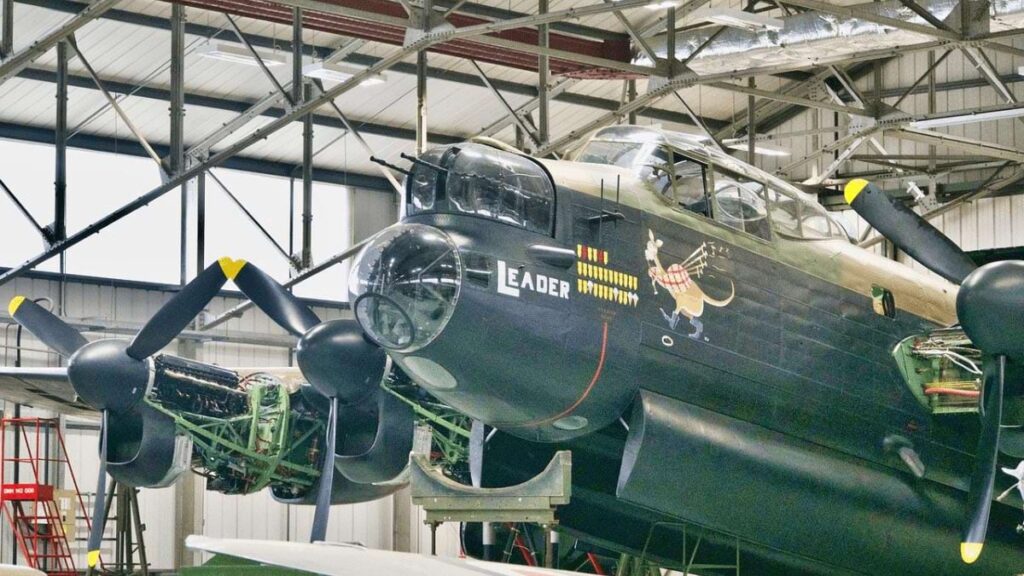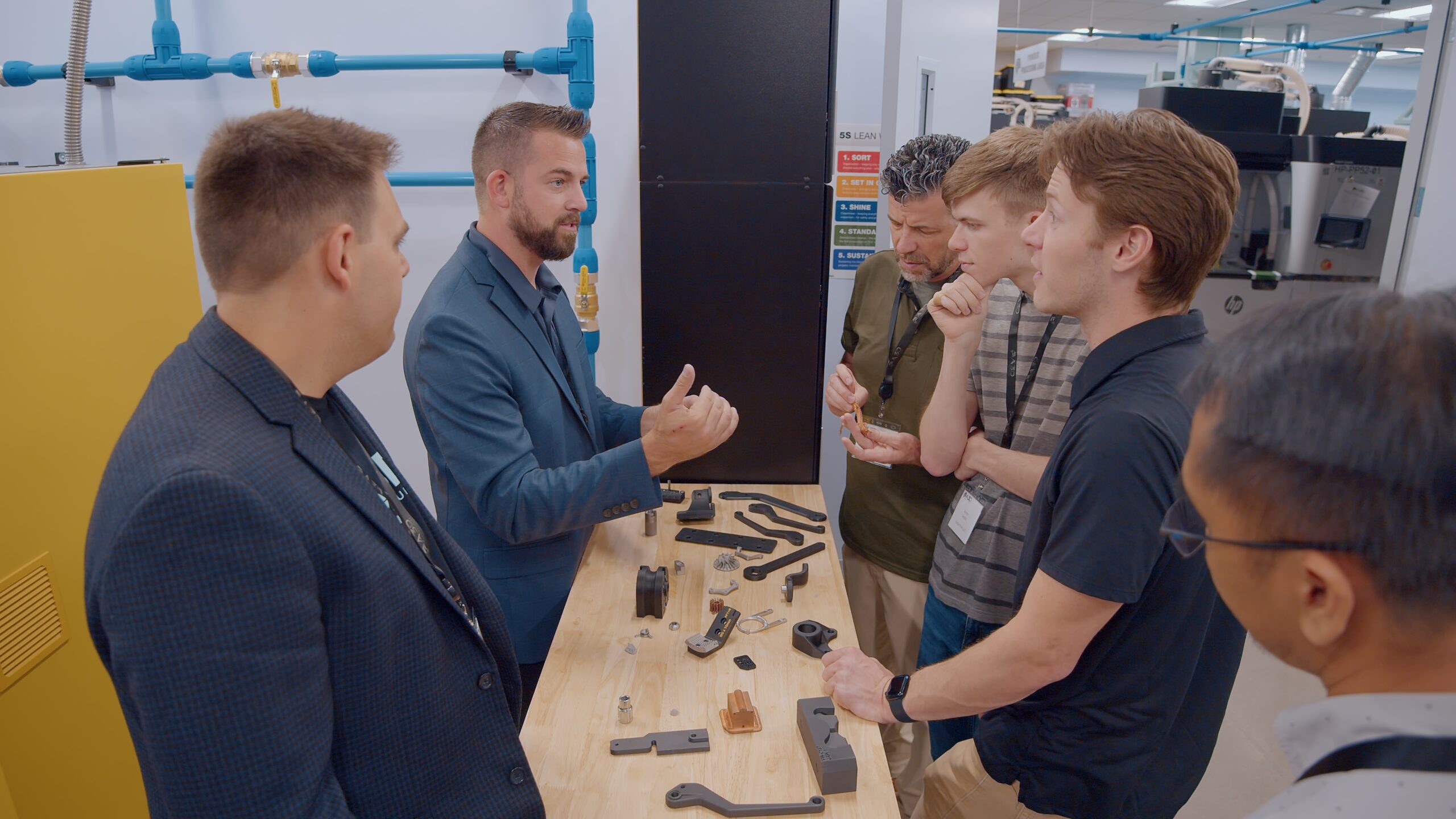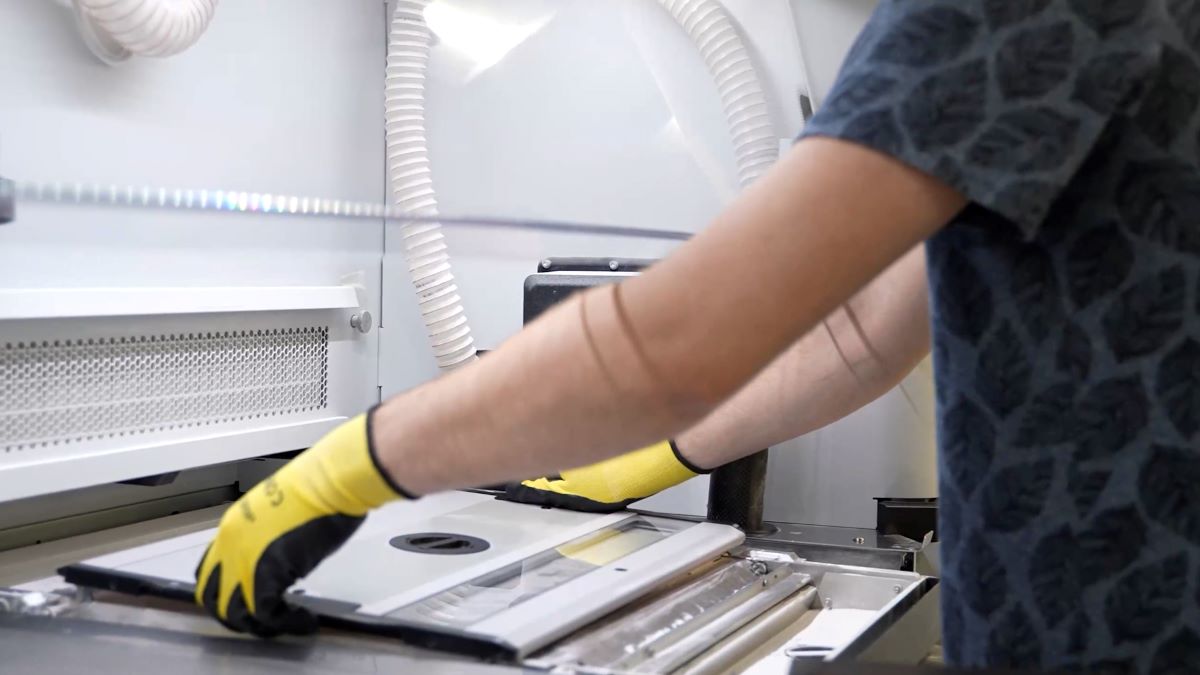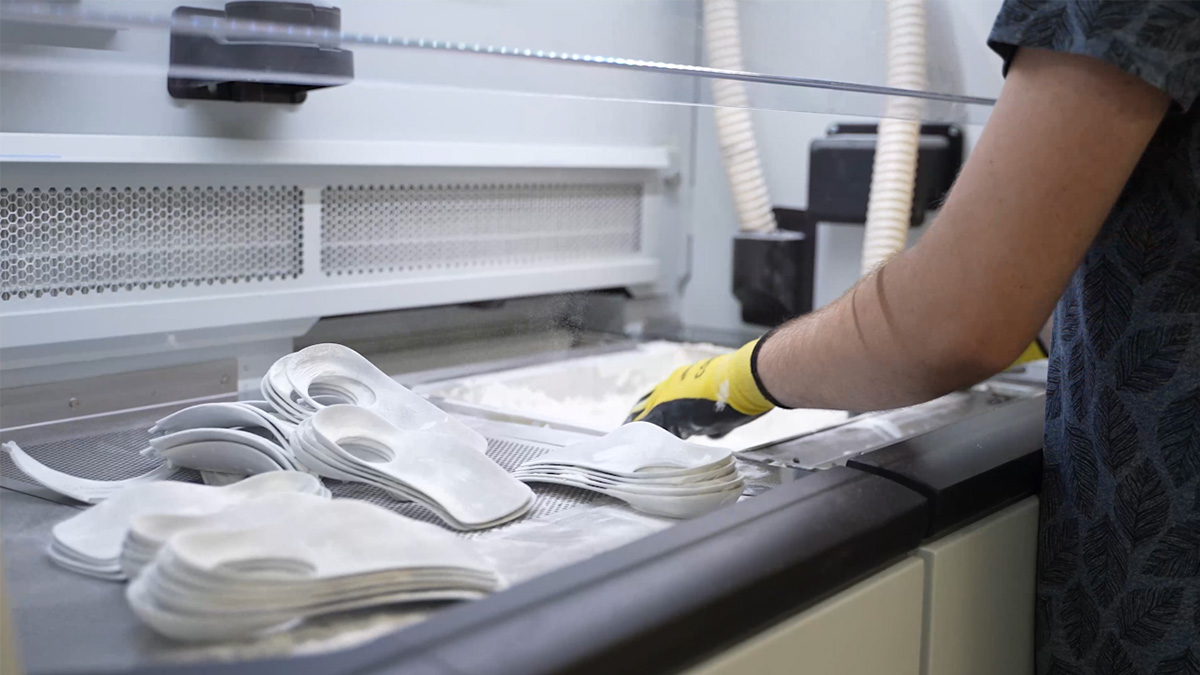History of Supply Chain Management
Supply chain management is crucial in any manufacturing industry, especially aerospace, where quality, safety and reliability are paramount.
The development of supply chain management in aerospace can be traced back to World War II when Boeing Aerospace faced a global demand for B-17 bomber aircraft. The B-17 was a complex machine requiring thousands of parts and components from hundreds of suppliers nationwide. To increase production efficiency and quality, Boeing had to streamline its supply chain and ensure all suppliers met the same standards and requirements.
In 1942, Boeing produced 50 B-17 aircraft per month. By the end of World War II, Boeing’s changes and continuous improvements increased production to over 350 aircraft per month. This achievement was possible by creating a centralized system of coordination and control, where suppliers were given detailed specifications, instructions and inspections for their products.
The company also established a network of subassembly plants and depots, where parts from different suppliers were integrated and tested before being shipped to the final assembly plant. By refining its supply chain and standardizing supplier requirements, Boeing improved its throughput by over 600%, a remarkable feat considering the challenges of a global conflict.
During World War II, Boeing’s successful supply chain management set a precedent and model for the aerospace industry and other sectors relying on complex production networks. The lessons from Boeing’s experience helped develop modern supply chain management practices and standards, such as AS9100, which is widely used and accepted today. By adopting these practices, aerospace manufacturers can leverage the best innovations from the past and apply them to current and future challenges, turning supply chain management into a strategic and competitive advantage.
Supply Chain Management – AS9100 Requirements
Aerospace manufacturing relies on a complex and global supply chain, with multiple suppliers, subcontractors and partners involved in designing, producing and delivering aircraft and spacecraft. The industry faces many challenges, including fluctuating demand, geopolitical tensions, environmental regulations and technological innovations.
To overcome these challenges and maintain a competitive edge, aerospace manufacturers must optimize their supply chain management and ensure their products meet the highest quality and performance standards.
One critical element of supply chain management in aerospace is AS9100, a quality management system (QMS) standard specific to the aerospace industry. AS9100 is based on the ISO 9001 standard but includes additional requirements and guidelines for aerospace. It covers all aspects of the product life cycle, from design and development to production, delivery, maintenance and repair.
AS9100 also defines the roles and responsibilities of all parties involved in the supply chain, including suppliers, customers, regulators and auditors. The aim is to ensure that all products and services delivered by the aerospace industry comply with applicable laws, regulations and customer expectations.
AS9100 provides a common language and framework for the aerospace supply chain, reducing the risk of errors, defects and delays. It helps improve communication and collaboration between stakeholders and enhances the traceability and accountability of processes and products.
By implementing AS9100, aerospace manufacturers can boost their reputation, customer satisfaction and market share while reducing costs, waste and liability. AS9100 is recognized and accepted by major aerospace customers, such as NASA, the US Department of Defense, Boeing, Airbus and Lockheed Martin.
Building and maintaining a strong supplier network is crucial for aerospace manufacturers, as it helps reduce operational risks, optimize resources and improve customer satisfaction. However, finding and selecting suitable suppliers is challenging. It involves evaluating various factors, such as the supplier’s capabilities, capacity, quality, reliability, flexibility and cost. Aerospace customers often must ensure their suppliers comply with AS9100 as a business requirement.
Auditing for Compliance
One way to ensure supplier compliance with AS9100 is through regular audits and evaluations of the supplier’s processes, products, performance and improvements. These audits can help identify and address gaps or issues in the supplier’s quality management system and verify conformity with AS9100 requirements. Audits also help establish and maintain a trusting and collaborative relationship between the manufacturer and the supplier, providing feedback and recommendations for continuous improvement.
Different types of audits can be performed on suppliers, depending on the assessment’s purpose, scope and frequency. Common types include:
- First-party audits: Internal audits conducted by the manufacturer on their processes, products and suppliers to ensure compliance with AS9100 and internal requirements. The manufacturer’s quality team usually performs these audits, which can be scheduled or unscheduled.
- Second-party audits: External audits conducted by the manufacturer on their suppliers to verify compliance with AS9100 and contractual requirements. The manufacturer’s quality team typically performs these audits, which can be planned or unplanned.
- Third-party audits: An accredited certification body conducts independent audits to certify the supplier’s compliance with AS9100 and other relevant standards. These audits are performed by certified auditors from the certification body and follow a predefined audit cycle.
To conduct effective and efficient audits, aerospace manufacturers should follow best practices:
- Establishing clear and consistent audit criteria based on AS9100 requirements and the manufacturer’s expectations.
- Communicating and coordinating with suppliers before, during and after the audit ensures a smooth process and avoids misunderstandings.
- Documenting and reporting audit findings, results and actions to provide evidence and feedback for supplier improvement.
- Following up on the supplier’s corrective and preventive actions to ensure issues are resolved and improvement goals are achieved.
- Reviewing and updating audit plans and procedures to reflect the changing needs of the manufacturer and supplier and evolving AS9100 standards.
By following these best practices, aerospace manufacturers can build and maintain a strong supplier network that meets AS9100 standards and requirements and delivers high-quality and reliable products and services.
Complexity Reduction
A significant advantage of working with a company like A3D is the ability to act as a single vendor for all aerospace manufacturing needs, reducing the complexity of managing multiple vendors for each requirement. This can save time, money and hassle while improving product quality and consistency.
Consider a hypothetical example where a customer needs a CNC-machined part from AMS-specified raw material. The parts require an ASTM-specified finish, COTS installation, laser-etched serialization identification, MIL-STD-130 packaging and an AS9102 FAIR of the assembly. Typically, the customer would need to deal with six different vendors, one for each requirement. This would involve coordinating and communicating with each vendor, negotiating terms and prices, monitoring quality and delivery and handling any issues or delays. The parts would also need to be shipped back and forth between vendors, adding to the project’s cost and lead time. This process can be complex and stressful, especially with tight deadlines and high expectations.
Managing the Project on Your Own
| Customer Requirement | Lead Time | Vendor |
| CNC Machined Part | 3 Weeks | Vendor A |
| AMS Specified Raw Material | 2 Weeks | Vendor B |
| ASTM Specified Finish | 2 Weeks | Vendor C |
| COTS Install | 2 Weeks | Vendor D |
| Laser Etched Serialized Identification | 3 Weeks | Vendor E |
| MIL-STD-130 Packaging | 1 Week | Vendor F |
| AS9100 FAI of Finished Assembly | 1 Week | SELF |
| Total Lead time: | 14 Weeks | 6 Vendors + doing some of the steps yourself |
However, if the customer chooses A3D as their partner, they only need to work with one vendor: us.
Our approved supplier network can handle all processes required for your project, from machining to finishing to packaging. We manage the entire project—from the initial print to the finalized product—and deliver it efficiently. You will only need to communicate with us and we will keep you updated on your project’s progress and status. We also ensure that the quality and performance of your products comply with AS9100 standards and your specifications.
By partnering with A3D, you can reduce lead time and project stress, allowing you to focus on your core business activities. A3D is your one-stop shop for aerospace manufacturing solutions.
Approved Vendors – The A3D Advantage
One of our recent projects involved manufacturing aluminum parts for a customer that required powder coating, screen printing and commercial off-the-shelf hardware installation.
The customer provided us with the drawings and specifications, and we managed the rest. We sourced the raw materials, fabricated the parts, coordinated with our trusted finishing and printing services suppliers and assembled the hardware components. We also performed quality inspections at every stage, ensuring that the parts met AS9100 standards and the customer’s requirements.
The A3D Advantage
| Customer Requirement | Lead Time | Vendor |
| CNC Machined Part | 3 Weeks | A3D |
| AMS Specified Raw Material | No Additional Lead Time | A3D Approved Vendor |
| ASTM Specified Finish | 1 Week | A3D Approved Vendor |
| COTS Install | No Additional Lead Time | A3D |
| Laser Etched Serialized Identification | 1 Week | A3D Approved Vendor |
| MIL-STD-130 Packaging | No Additional Lead Time | A3D |
| AS9100 FAI of Finished Assembly | No Additional Lead Time | A3D |
| Total Lead time: | 5 Weeks | A3D |
However, the project was not without challenges.
During the production phase, we encountered a shortage of some hardware items specified by the customer. This affected the delivery schedule and budget, requiring us to communicate with the customer and negotiate a revised timeline and cost estimate. We also had to find alternative sources for the hardware items, which involved contacting multiple vendors, comparing their prices and availability and verifying their quality and reliability. Fortunately, we secured the necessary hardware items without compromising the quality or safety of the parts.
Despite these challenges, A3D delivered the project successfully and to the customer’s satisfaction. This success was due to our tight controls on our supplier network and our thorough vetting and qualification process. We have established long-term relationships with our suppliers based on trust, transparency and mutual benefit. We also conduct regular audits and evaluations of our suppliers to ensure they comply with AS9100 standards and our expectations.
With a strong and reliable supplier network, we offer our customers a comprehensive and integrated solution for their aerospace manufacturing needs, from drawings to finalized products. We are also equipped to handle any issues that may arise during the project and provide timely and effective solutions. A3D is committed to delivering high-quality, high-performance products and services to our customers that always meet their requirements and expectations.
AS9100 Approved Vendors
One key factor distinguishing A3D from its competitors is our adherence to AS9100 standards, an internationally recognized quality management system for the aerospace industry. AS9100 specifies the requirements for designing, developing, producing, installing and servicing aerospace products and services. It also includes additional requirements for risk management, configuration management, project management and process improvement. By following AS9100 standards, we ensure that our products and services meet the highest quality, safety, reliability and performance levels.
AS9100 standards also influence our supplier network, an essential part of our value chain. We have a pool of suppliers who comply with AS9100 standards and our specifications and expectations. We select these suppliers based on customer requirements to ensure we deliver the appropriate level of quality and value. We also regularly monitor and evaluate their performance using various tools and methods such as audits, inspections, feedback and corrective actions. We only work with suppliers committed to quality, continuous improvement and customer satisfaction.
AS9100 standards result from years of refinement and development in the aerospace industry, with input from major organizations such as Boeing, Airbus, the Department of Defense and NASA. They reflect the best practices and lessons learned from the aerospace sector and incorporate the latest technologies and innovations. They are also aligned with ISO 9001 standards used in any organization’s general quality management system. By adopting AS9100 standards, A3D meets the specific requirements of the aerospace industry and the broader global market expectations.
Quality and Excellence for Future Success
AS9100 standards are not only a mark of quality and excellence for A3D but also a way to optimize our supply chain management and ensure customer satisfaction.
The origins of these standards can be traced back to World War II when Boeing refined the manufacturing of the B-17 bomber, a refinement that changed the course of the war. To ensure the quality and reliability of the B-17, Boeing introduced rigorous inspection and testing procedures, as well as strict documentation and record-keeping. These practices laid the foundation for the modern quality management system now embodied by AS9100 standards.
Following these best practices, A3D improves our operational efficiency, reduces risks and enhances our competitive edge in the aerospace industry. Moreover, AS9100 standards enable us to adapt to our customers’ changing needs and expectations and the emerging challenges and opportunities in the aerospace sector.
By embracing a quality and continuous improvement culture, we are ready to face the future with confidence and innovation. Contact us today to find out how we can collaborate with you.




